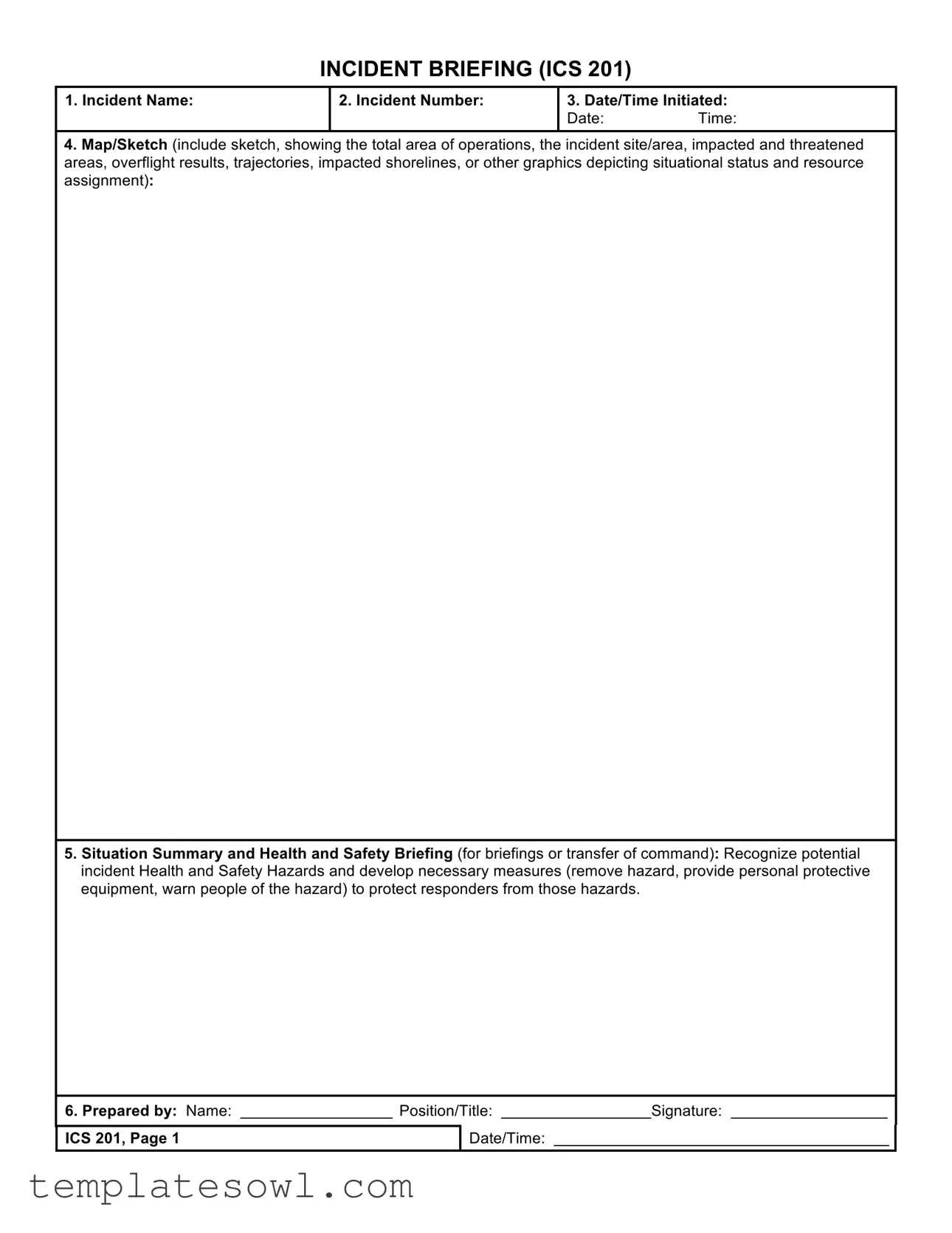What is the purpose of the ICS 201 form?
The ICS 201 form, also known as the Incident Briefing, serves as a critical tool for documenting and conveying essential information about an incident. Its primary purpose is to provide the Incident Commander and the Command and General Staffs with a consolidated overview of the incident situation and resources available. Additionally, it functions as an initial action worksheet and serves as a permanent record of the initial response to the incident, ensuring that key information is communicated seamlessly during transitions of command or briefings.
Who prepares the ICS 201 form and when is it distributed?
The ICS 201 form is typically prepared by the Incident Commander. This preparation often takes place in conjunction with initial briefings, where information must be efficiently communicated. Ideally, the document is duplicated and distributed prior to the initial briefing of the Command and General Staffs or other responders involved in the incident. It ensures all parties have a clear understanding of the situation and can contribute effectively to the response efforts.
What sections are included in the ICS 201 form?
The ICS 201 form comprises several crucial sections. Notable sections include Incident Name, Incident Number, Date/Time Initiated, Map/Sketch, Situation Summary and Health and Safety Briefing, Current and Planned Objectives, Current and Planned Actions, Strategies, and Tactics, Current Organization, and Resource Summary. Each section plays an essential role in identifying the incident’s parameters, assessing the situation, and outlining operational strategies, making this form indispensable during an emergency response.
How should the Map/Sketch section be prepared?
The Map/Sketch section of the ICS 201 form must include a detailed representation of the incident area. This section should clearly depict the total area of operations, highlighting the incident site, impacted and threatened areas, as well as any relevant overflight results or trajectories. Utilizing commonly accepted ICS map symbology is recommended to ensure clarity and accuracy. This visual aid not only enhances situational awareness but also facilitates effective resource allocation and operational planning.
Can additional pages be added to the ICS 201 form if needed?
If there is a need for more space on any part of the ICS 201 form, additional pages can be included. In such cases, it is advisable to utilize a blank ICS 201 and repaginate it as necessary. This flexibility allows responders to provide comprehensive details without compromising the quality of information shared. Detailed and accurate documentation aids in maintaining continuity and supports effective decision-making during incident management.






